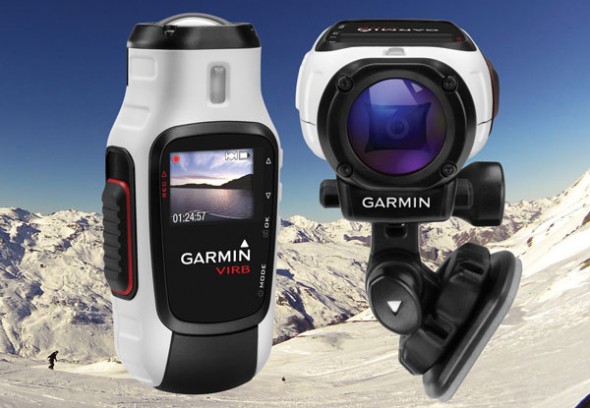
- #CUSTOMIZE GARMIN VIRB EDIT 720P#
- #CUSTOMIZE GARMIN VIRB EDIT 1080P#
- #CUSTOMIZE GARMIN VIRB EDIT UPDATE#
- #CUSTOMIZE GARMIN VIRB EDIT FULL#
- #CUSTOMIZE GARMIN VIRB EDIT FREE#
In this case RAW file support does need a computer and not your phone, because the processing overhead is just so high. Once that’s done you’ll plug your camera into your computer with VIRB Edit. This means connecting any sensors or data you want, like heart rate or power, or automotive data if that’s your thing. Once that’s done, you’ll basically record as normal. You have to do this on the mobile app, as for some odd reason the camera itself doesn’t allow you to select this resolution. By default if you record to RAW mode it won’t be at 5.7K. In order to get this to work you’ll need to ensure that you’re both recording in RAW mode on the camera AND have set the RAW mode to 5.7K. 5.7K Stitching Support:įirst up is the new 5.7K stitching mode.
#CUSTOMIZE GARMIN VIRB EDIT 1080P#
Further, with the new HyperFrame functionality, you can take a 360° video and export a flat 1080p video angle from it, allowing you to get traditional 1080p footage but with all the angles of a 360° video.
#CUSTOMIZE GARMIN VIRB EDIT FREE#
Now you can use Garmin’s own free VIRB Edit app to not only stitch everything together at 5.7K resolution – but also overlay metrics like speed, g-forces, heart rate, and many more. Those apps were either incredibly expensive, or complex to use (or if easy to use they were limited to 4K anyway). If you wanted higher resolutions you had to manually stitch the two 4k files together using 3rd party apps. Bad stitching manifests itself in many ways, from lopsided lighting to visible seams.Īnyway – back at launch, Garmin only supported in-camera stitching at 4K resolution (not the 5.7K the unit was capable of). How well a company does that will drive whether or not you think 360° video is worth your time.

The process of pulling those files together into a single file is called ‘stitching’. With the VIRB 360 though, the camera stitched two 4K video sources together (Side note: in video math, 2x4K does NOT equal 8K, but rather 5.7K.
#CUSTOMIZE GARMIN VIRB EDIT 720P#
Previously, even 4K, 360° action cameras didn’t look all that spectacular, because the 4K resolution was stretched over that entire 360° view, so your effective resolution floated between 720p and 1080p. 360 video may not be for everyone, but the ability to reframe fixed-frame content after the shot is something that any videographer can find value in.When the VIRB 360 was announced this past spring, it was one of the first single-device 360° action cameras to actually produce higher than 4K resolution video files that looked good. We’re pleased to see that Garmin - originally known for its GPS units - is continuing to step up its efforts to prove that it is taking photography and video production seriously. Now, Garmin is simply offering a first-party solution for doing so, which comes at no extra cost for Virb 360 owners.
#CUSTOMIZE GARMIN VIRB EDIT FULL#
This isn’t an entirely new feature for the Virb 360 users have always had the option of stitching via third-party software (such as Adobe Premiere Pro) to capture that full 5.7K resolution.

With those pixels being spread across a spherical field, immersive video stands to benefit from all the resolution it can get. The reason for doing this is all about resolution: In camera, the Virb 360 is limited to 4K when stitched in post, users can take advantage of the full 5.7K resolution offered. Normally, this process is done in-camera with the Virb 360, but users now have the option to do it manually.

Garmin has also introduced the ability for users to stitch their own 360 videos in post. This feature will remain active within HyperFrame Director mode, so that even as users reframe and zoom into shots, the output video will remain stabilized.īut HyperFrame Director isn’t the only new feature coming to Virb Edit. One of the features we liked most about the VIRB 360 in our review was its electronic stabilization, which uses information from the camera’s onboard sensors to smooth out rough footage.

The software will even allow the image to be zoomed all the way out into a “tiny planet” perspective, which is one of the more fun side effects of 360 video. The feature can also be used to slowly reveal one’s surroundings, by starting from a narrow angle of view and slowly “zooming out,” making use of the ultra-wide angle of view. Users can pull off smooth pans or rapid 180-degree rotations to quickly change perspective. HyperFrame Director allows users to turn 360-degree footage from Garmin’s Virb 360 camera into fixed-frame, 1080p video while panning, zooming, and reframing the shot as they see fit.
#CUSTOMIZE GARMIN VIRB EDIT UPDATE#
Garmin is taking advantage of this feature in a free update to its Virb Edit desktop app with the new HyperFrame Director mode. But 360-degree video also has applications when outputting to standard fixed-frame (non-360) formats, with the potential to give editors creative freedom over the framing and angle of the shot. Garmin VIRB 360: HyperFrame Director Mode offers more creative control.The medium of 360-degree video is great for creating immersive experiences, particularly when paired with a virtual reality headset.


 0 kommentar(er)
0 kommentar(er)
